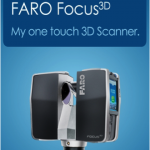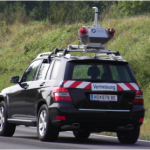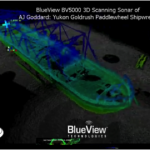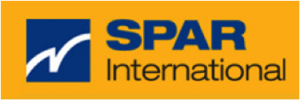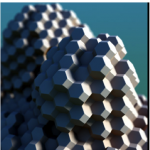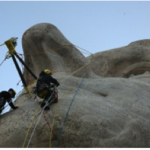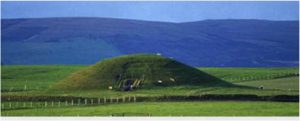SPAR 2011 Conference – Houston, Texas – Part 3
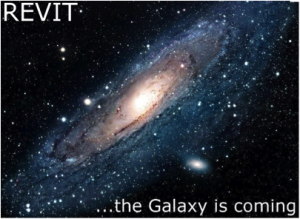 In part 1 of my review of SPAR 2011 I referred to the new and fascinating innovations in software over the past year. I think probably the most important was the information from Autodesk that Revit 2012 will have a point cloud engine and many of the capabilities that other point cloud soft programs have and some new ones. Revit has become the standard for BIM for the private sector and the Architectural world, so this was a very important release. This will enable the Architectural community to be able to bring in and reference registered point clouds, and to benefit from the data-rich field that other software has been using. I have read many articles debating whether Architectural design firms wanted to be responsible for information contained within point clouds and there are good points on both sides of the room on this. However this new release will allow them to compare their design to actual conditions within the point cloud (clash detection) and just this ability alone will lead to construction savings and fewer design revisions. One of the new tools that was reviewed was their automatic feature extraction. This is the beginning of a road that will lead to many great advances in the point cloud technology. I saw this first in the mobile scanning programs. In that example you could fence in a sign type like a merge sign on an interstate on ramp and tell the software to go find it and it would retrieve 80 to 95% of the similar signs in the cloud. Inside the new Revit point cloud they are in the process of
In part 1 of my review of SPAR 2011 I referred to the new and fascinating innovations in software over the past year. I think probably the most important was the information from Autodesk that Revit 2012 will have a point cloud engine and many of the capabilities that other point cloud soft programs have and some new ones. Revit has become the standard for BIM for the private sector and the Architectural world, so this was a very important release. This will enable the Architectural community to be able to bring in and reference registered point clouds, and to benefit from the data-rich field that other software has been using. I have read many articles debating whether Architectural design firms wanted to be responsible for information contained within point clouds and there are good points on both sides of the room on this. However this new release will allow them to compare their design to actual conditions within the point cloud (clash detection) and just this ability alone will lead to construction savings and fewer design revisions. One of the new tools that was reviewed was their automatic feature extraction. This is the beginning of a road that will lead to many great advances in the point cloud technology. I saw this first in the mobile scanning programs. In that example you could fence in a sign type like a merge sign on an interstate on ramp and tell the software to go find it and it would retrieve 80 to 95% of the similar signs in the cloud. Inside the new Revit point cloud they are in the process of using similar technology to locate and capture elements that are already in the point cloud. This will lead to very big productivity gains. Just imagine if you could locate and detail all the windows in a building and have them sized and dimensioned automatically from just locating one and then having the software look for the remaining similar windows.
using similar technology to locate and capture elements that are already in the point cloud. This will lead to very big productivity gains. Just imagine if you could locate and detail all the windows in a building and have them sized and dimensioned automatically from just locating one and then having the software look for the remaining similar windows.
Revit BIM Modeling, does it increase efficiency in designing? That has always been the big question. I talked to several contractors who provided services creating BIM models and most said they could save as much as 30% of the cost from designing the old way with 2D paper drawings. The payback came by using the modeling through the complete project to save time on the construction details and other tedious time consuming task. Again the more experienced designers got the biggest benefit.
Automated Pipe Modeling
 ClearEdge3D has come through again. In the automated modeling world they were one of the first to come out with a software that detected flat surfaces for Architectural and structural modeling. They have again raised the bar with their new release of EdgeWise Plant. They have designed a plant and pipe software that can analyze a point cloud and automatically detect and model about 50% of the pipes in a minimal amount of time. Users were reporting that the time to model was approaching 1/3 the previous time on the same types of projects. There is still work to be done for total automation but remember 3 years ago there was not a point cloud to model automatic software! Now we are able to detect flat surfaces and pipe shapes. All will be improved as time goes on but what a great leap. I talk to some of my associates in the modeling business and they were looking at investing in the product. This was the first year some of them had considered making the step up.
ClearEdge3D has come through again. In the automated modeling world they were one of the first to come out with a software that detected flat surfaces for Architectural and structural modeling. They have again raised the bar with their new release of EdgeWise Plant. They have designed a plant and pipe software that can analyze a point cloud and automatically detect and model about 50% of the pipes in a minimal amount of time. Users were reporting that the time to model was approaching 1/3 the previous time on the same types of projects. There is still work to be done for total automation but remember 3 years ago there was not a point cloud to model automatic software! Now we are able to detect flat surfaces and pipe shapes. All will be improved as time goes on but what a great leap. I talk to some of my associates in the modeling business and they were looking at investing in the product. This was the first year some of them had considered making the step up.

RealityLinx is another program that specializes in the pipe industry and includes a pipe parts library and more importantly can export files into PDMS design software. This software is used in the oil and gas industry as a standard design tool. This software anticipates what parts the pipe are captured in the point cloud and saves a lot of trial and error in picking the right size bend etc. Another software that we found interesting is 3D Reshaper. Our firm purchased this software prior to the show and we found that it proves to be an excellent tool to complement the other software packages. It is very good at cleaning noise in point clouds when using 3D laser scanning and creating smooth tin triangles so that surfaces can be smoothed efficiently.
These are real breakthroughs and will change the industry in a hurry. Just two weeks ago in one of my educational presentation I made the statement that “we were still in the model T ford days of point cloud software”. I now feel like we are into the early 60’s model automobiles and heading full steam into the future models. There was even talk of auto coding points in point clouds so that ceilings points knew they were ceilings and doors knew they were doors. These programs are not there yet but they are on the way. An interesting observation is that many of the small companies are driving the software innovation in addition to the traditional players like Autodesk.
Coolest Vendor I saw
![]() At the end of the second day, I and a few other associates I have seen over the years went to the booth for XYZ RGB. This stuff was so advanced that we had trouble understanding what made it work. The technology uses a set of two digital cameras and an additional random dot projector and software and can capture an image and turn it into a point cloud of very fine mesh. He could even photograph objects using Apple IPHONES. It is used in the movie, gaming and animation industries. It is excellent in small areas and does almost live animation of people. It can turn a photograph of a person into a model almost instantly. Very creative! I am sure it has uses that have not been tried yet.
At the end of the second day, I and a few other associates I have seen over the years went to the booth for XYZ RGB. This stuff was so advanced that we had trouble understanding what made it work. The technology uses a set of two digital cameras and an additional random dot projector and software and can capture an image and turn it into a point cloud of very fine mesh. He could even photograph objects using Apple IPHONES. It is used in the movie, gaming and animation industries. It is excellent in small areas and does almost live animation of people. It can turn a photograph of a person into a model almost instantly. Very creative! I am sure it has uses that have not been tried yet.
Spar 2011 was very beneficial and well worth the trip time and money. Being in the 3D laser scanning industry, if I could only go to one show it would be SPAR. There were more than 20 separate tracts to attend and they did a very thorough job of covering the industry.
H Tate Jones PLS

